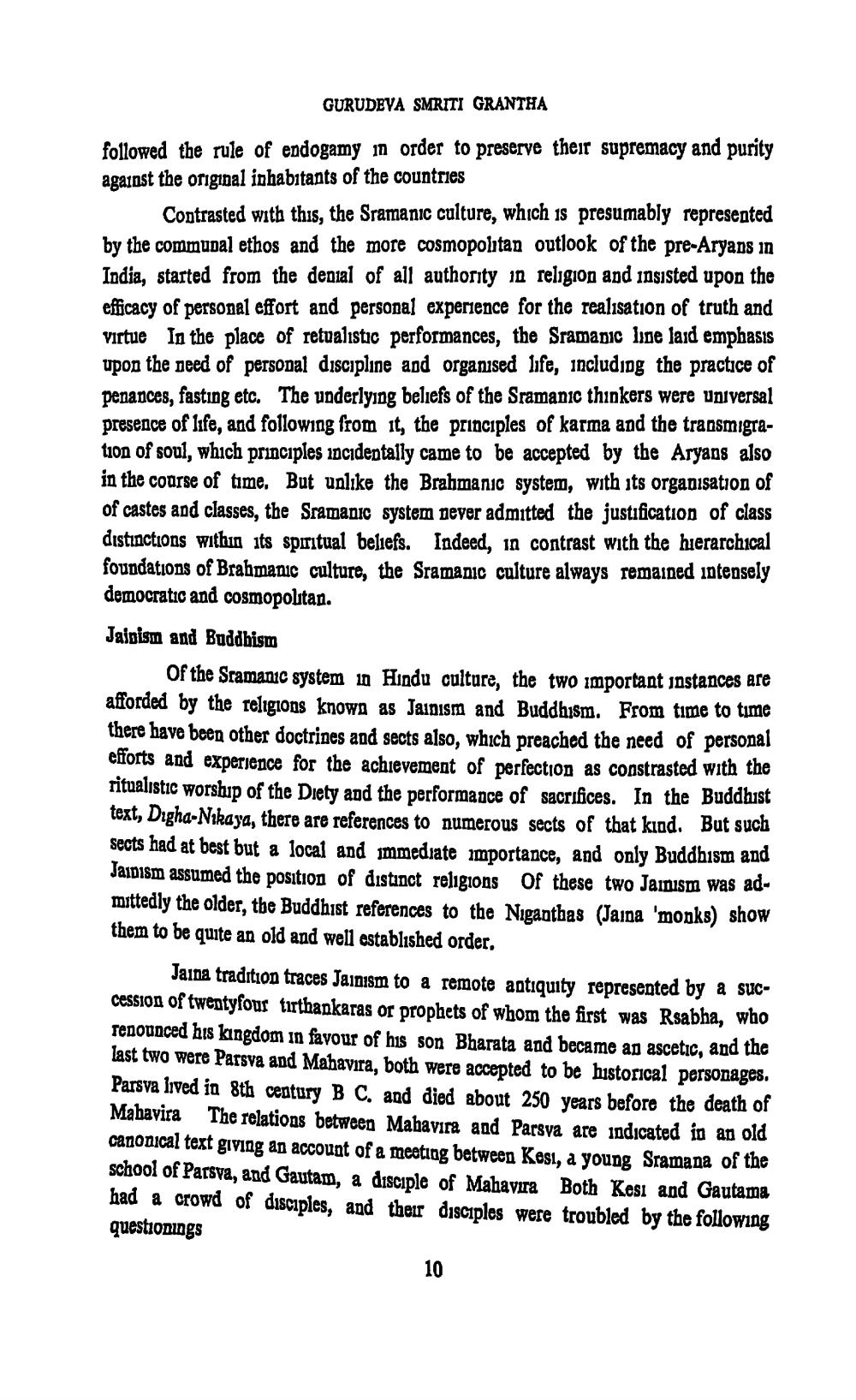________________
GURUDEVA SMRITI GRANTHA
followed the rule of endogamy in order to preserve their supremacy and purity against the original inhabitants of the countries
Contrasted with this, the Sramanic culture, which is presumably represented by the communal ethos and the more cosmopolitan outlook of the pre-Aryans in India, started from the denial of all authority in religion and insisted upon the efficacy of personal effort and personal experience for the realisation of truth and Virtue In the place of retualistic performances, the Sramanic line laid emphasis upon the need of personal discipline and organised life, including the practice of penances, fasting etc. The underlying beliefs of the Sramanic thinkers were universal presence of life, and following from it, the principles of karma and the transmigration of soul, which principles incidentally came to be accepted by the Aryans also in the course of time. But unlike the Brahmanic system, with its organisation of of castes and classes, the Sramanic system never admitted the justification of class distinctions within its spiritual beliefs. Indeed, in contrast with the hierarchical foundations of Brahmanic culture, the Sramanic culture always remained intensely democratic and cosmopolitan.
Jainism and Buddhism
Of the Sramanic system in Hindu culture, the two important instances are afforded by the religions known as Jainism and Buddhism. From time to time there have been other doctrines and sects also, which preached the need of personal efforts and experience for the achievement of perfection as constrasted with the ritualistic worship of the Diety and the performance of sacrifices. In the Buddhist text, Digha-Nikaya, there are references to numerous sects of that kind. But such sects had at best but a local and immediate importance, and only Buddhism and Jainism assumed the position of distinct religions Of these two Jainism was admittedly the older, the Buddhist references to the Niganthas (Jaina 'monks) show them to be quite an old and well established order.
Jaina tradition traces Jainism to a remote antiquity represented by a succession of twentyfour tirthankaras or prophets of whom the first was Rsabha, who renounced his kingdom in favour of his son Bharata and became an ascetic, and the last two were Parsva and Mahavira, both were accepted to be historical personages. Parsva lived in 8th century B C. and died about 250 years before the death of Mahavira The relations between Mahavira and Parsva are indicated in an old canonical text giving an account of a meeting between Kesi, a young Sramana of the school of Parsva, and Gautam, a disciple of Mahavira Both Kesi and Gautama had a crowd of disciples, and their disciples were troubled by the following questionings
10




